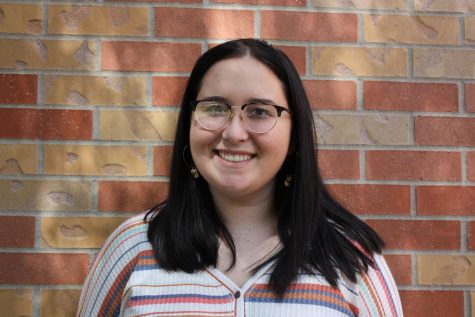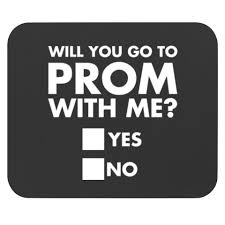What’d You Miss?
Not a fan of the news? No worries, we’ve condensed the most newsworthy stories into briefs for your reading pleasure.
December 13, 2019
Turn the Light Off
At the beginning of September, President Donald Trump made an announcement that shocked and confused the country. His administration was doing away with energy efficient light bulbs. The government phase-out of incandescent bulbs has been over ten years in the making, but with a recent push from the Trump Administration restrictions on them have been lessened.
The change came unexpectedly to many people around the country.. After the United States switched to energy-efficient light bulbs, the average household energy usage dropped. This was a monumental step in the battle to fight climate-change, and for the Trump Administration to reverse the act seems like a slap in the face to the activists who fought for the switch in the first place. According to the Department of Energy, replacing your home’s five most-used lights with energy-efficient bulbs will save you $75 every year because they use less electricity and have a longer life.
Additionally, energy-efficient light bulbs use up to 80% less energy than traditional light bulbs and can last up to three times longer. Energy-efficient bulbs are also recyclable, unlike their counterparts.
So why is the Trump Administration doing away with the more environmentally friendly bulb? President Trump commented on how the light bulbs affected his appearance. He claims the lights “make him look orange”. Besides his opinions based on his appearance, he complained about the price of the bulbs, which run about two dollars a piece for normal household bulbs.
The change is still settling in, and as more people change to the more expensive bulbs, the question will be asked: was the change necessary?
Where There’s Smoke, There’s Fire
This summer, the Amazon Rainforest caught fire. The news broke national headlines in July, however, when at that point, the forest had been on fire for over a week.
The fire destroyed over 7,200 square miles of forest before a combined effort of fire control and rain finally quenched the raging fires. The news, however, did not state what exactly started the wildfires that wiped out precious wildlife habitats.
Soon the truth arrived: Farmers had set fire to the forest to clear room for farm land. However, when the fire quickly became out of control emergency services were forced to take over and attempt to put out the fire. Even though the Amazon was put out in the end, that wasn’t the last fire to be set in the rainforest. Brazil’s National Institute for Space Research reported over 9,500 new fires since August 15th, all with the purpose of clearing land for other purposes.
“There has been a lot of analysis and satellite data that shows there is so much land already cleared – a lot abandoned or very poorly used and managed that we could use to grow food on,” Nigel Sizer, tropical forest ecologist and chief program officer with the Rainforest Alliance commented in an interview with National Geographic.
The burning of the Amazon Rainforest was detrimental to the ecosystems it contained. The rainforest contains over 25% of the earth’s ecosystem, ranging from its animals or plants. When the forest began to burn, animals died, plants burnt, and smoke polluted the air for the surrounding wildlife. Many of the surrounding cities experienced black skies of smoke in the last days of the fire. People were forced to evacuate, and those who didn’t suffered from the poor air quality in the days that followed.
Under the Skin
There are different requirements for enrollment in high school this year; the newly enforced vaccination for juniors in Kansas this year is the meningitis shot, called meningococcal. It prevents meningitis and the many side effects such as seizures. Teens must get vaccinated if they were not previously before the age of sixteen.
Local parents felt the heat to get their kids to the doctor for this vital vaccine before school started. This round of vaccination is a necessity and is mandatory for enrollment, for both public and private schools. There are only two reasons for exemption; religious reasons or health concerns from a physician.
The lack of choice in this matter upsets people greatly. “I think most people in Kansas are independent enough that they prefer to make their own family decisions without the government telling them what to do,” said Connie Newcome, president of Kansas for Health Freedom.
Some parents feel as though if they homeschool their children the vaccinations are irrelevant as they are not around others. “It only takes one sneeze or one shared drink with a kid who has it to get it,” Doctor Christine White said.
Getting these vaccines is not only beneficial to those who receive them, but also to those who can’t. People in the community with low immune systems are at high risk when there is a disease going around. With the current measles outbreak and people refusing to get vaccinated, the risk is as high as ever. Small children, the elderly, and all teens and adults unvaccinated are able to catch this illness.
Doctors in the Kansas City area are strongly advising people to get their vaccines to increase everyone’s health and life expectancy. Vaccines are always recommended and are strongly urged to get.
Lights Out
Reports claim there’s a new epidemic; teen vaping. Towards the end of summer, teens were being hospitalized for the damage these vapors were doing to their health. The number of teens affected is still rising. People.com reported that twenty two teens in the Midwest alone were hospitalized. All hospitals see the same symptoms: black spots on the lungs and damage from nicotine, smoke inhalation and THC oil in lungs. More symptoms include: weight loss, slowed brain development and addictive tendencies.
Some injuries are so severe the patient is put under a medically induced coma to treat the burns on the walls of the lungs. A few procedures even resulted in death from issues with THC related vaping. Not only the doctors, but the teens that have come forward, are pleading others to stop using the e-cigarettes.
Adam Hergenreder, a teen in Illinois, told the New York Post that he was put in the hospital for a vaping related lung injury. “I feel stupid,” Hergenreder said. “I want other people to stop. It’s going to attack your lungs.” Hergenreder also commented “People just see that little pod and think, how could that do anything to my body?”. He is now an example for other young teens who vape.
Juul is the most common device among teens, but there are many others as well. The long term effects of vaping are inconclusive but are not suspected to be anything but destructive.
This nationwide scare does not only affect teens. A Kansas City man died from side effects of the e-cigarettes, he is one of nine fatalities due to vaping. The Trump Administration is planning to ban all flavored nicotine pods such as mango and mint. The goal is to get the flavors besides original tobacco flavored vapors off of the market so the appeal of vaping goes away for teenagers.
While vaping among teens is getting higher, the destruction to healthy and vital lungs is climbing along it. Nicotine is not intended for teens and causes harm to vital lungs. On all products containing vaping and nicotine products it clearly states that nicotine is an addictive chemical and it is a cigarette alternative for adult smokers. Juul and cigarettes are not sold to those under twenty one due to the addictive properties of nicotine.
Doctors are doing testing to try and find the long term effects, but recommend to stop inhaling the toxic vapors.





